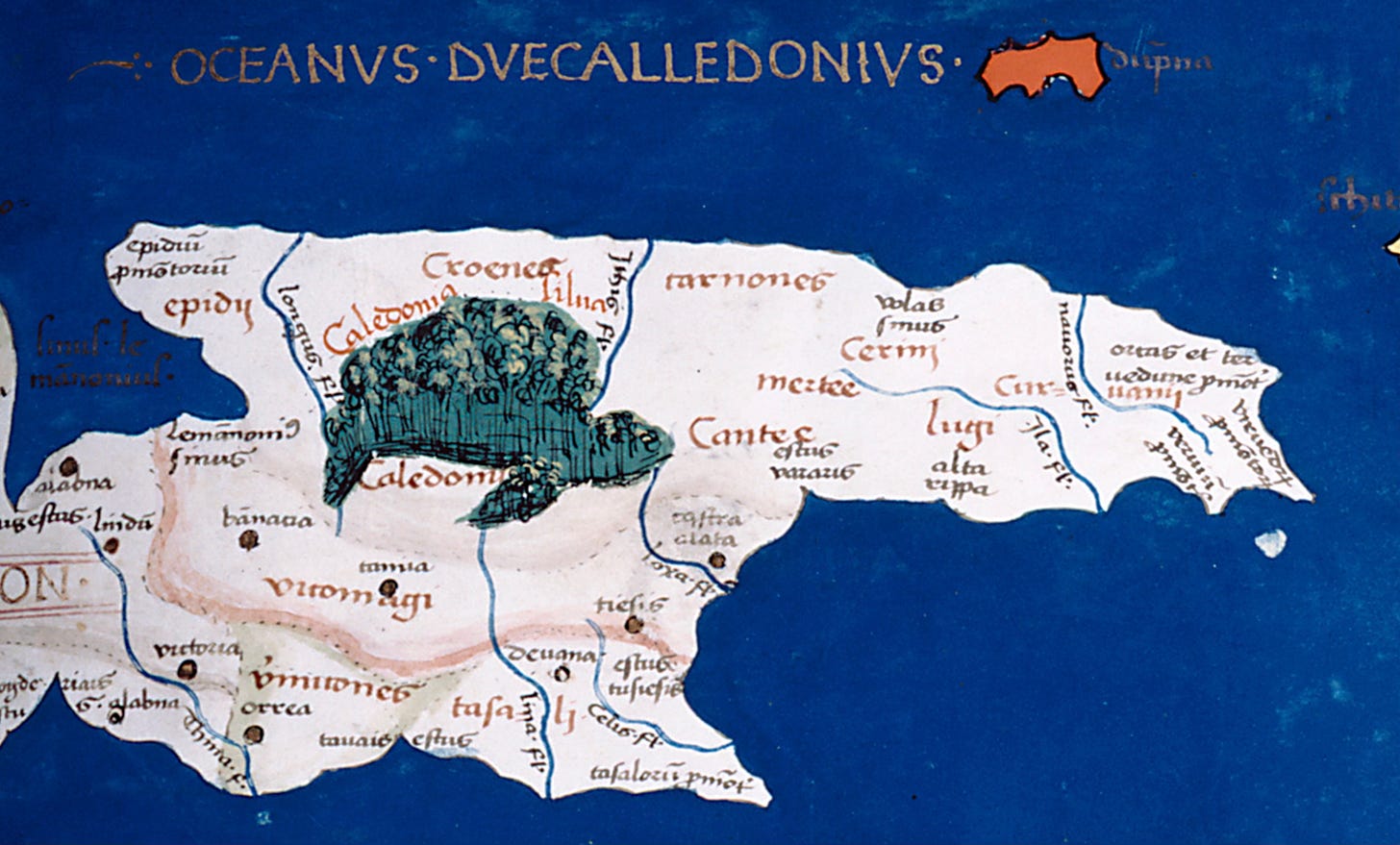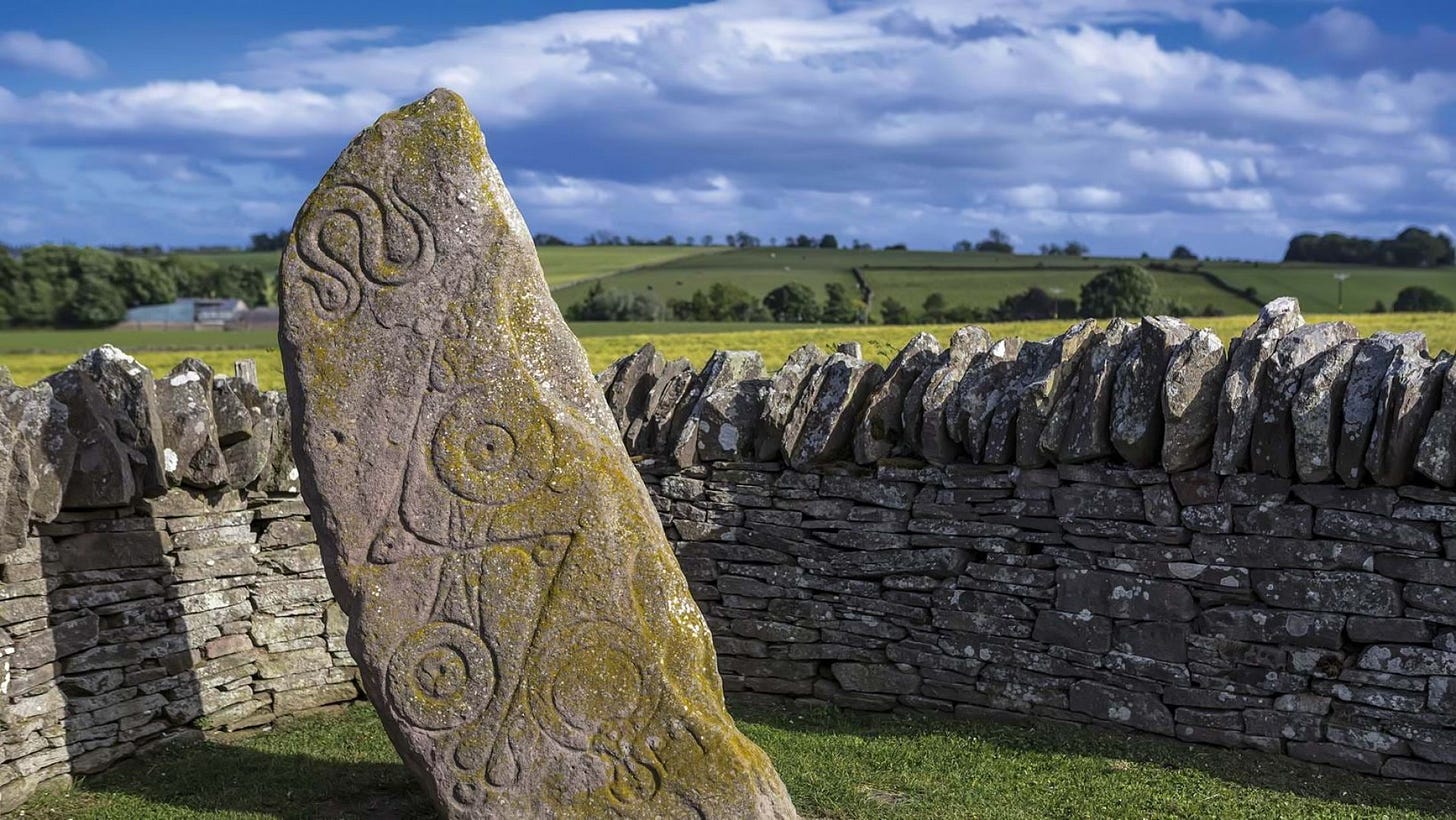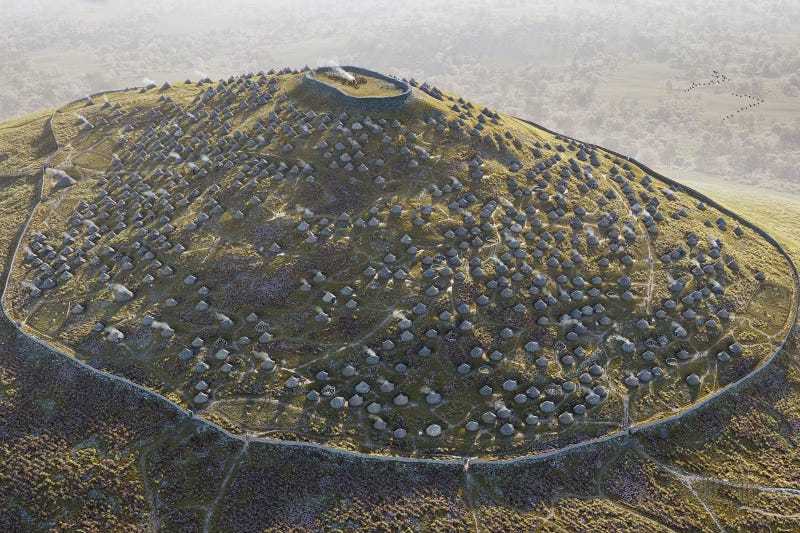The origin of the Picts
What does the linguistic evidence indicate?
According to Scottish archaeologists, the Picts have their origin or ‘ethnogenesis’ in about the year 300, the date at which they are first mentioned in a Roman source. But is the first recorded mention of the name of a people a reliable indication of the date of their origin? Could the first mention of a people by a particular name reflect something else? Linguistic evidence has survived that suggests the Picts must have already existed in the second century and that their ethnogenesis occurred much earlier than that.
The concept of ethnogenesis first became popular in the 1960s and the term is used generally to mean the ‘origin of peoples’ – of distinct ethnic groups. Historians can point to the time when peoples who called themselves French and English first arose, just as they can isolate the development of a more recent identity such as Quebecker or New Zealander. But historians do not do this by studying when other people began to use ethnic descriptions comparable to Pict.
The fourth-century Roman historian Ammianus Marcellinus explained that the Picts came in two types: Dicalydones and Verturiones. But the oldest surviving reference to Dicalydones is recorded by the second-century Greek geographer Ptolemy who noted that the seas around what is now Scotland were known in his time as the Duecaledonius Ocean. The descriptions Duecaledonius and Dicalydones are evidently just earlier and more recent forms of the same term and literally mean ‘double-Caledonian’. Moreover, the use of the modifier Due- ‘twofold, double’ in this manner has long been thought to indicate ‘greater’, presumably a sign that by the fourth century the Picts were thought by the Romans to fall into two groups: Greater Caledonians and Verturiones.
It is not clear when the term Verturiones was first employed, but it seems to be reflected in the name of the early medieval Pictish kingdom called Fortriu in Irish sources and the people called the Wærteras in Old English. The kingdom of Fortriu is generally accepted to have been located about the Moray Firth, but its origin is obscure.

It is clear, however, that the description Caledonian predates the first recorded Roman mention of Picts. Why the name Pict first started appearing in Roman accounts at the end of the third century can also be assessed etymologically.
The description Pict is often claimed to have been adopted by the Romans because they considered the Picts to be painted or tattooed people. Pict sounds a bit like the Latin term pictus ‘painted’, but the linkage of the two terms reflects an ancient folk etymology and it has long been rejected by linguists as implausible. Ancient folk etymologies were little more than guesses and most linguists know not to trust them.
Instead, the renowned Austrian etymologist Julius Pokorny proposed that the term Pict derived from a root that indicated hostility. He saw it as reflecting a cognate of Lithuanian pìktas ‘angry, evil’ and Old English fah ‘hostile’, the root of Modern English foe. Pokorny’s etymology of the name of the Picts suggests that they became known by this name in Latin because they were hostile to the Romans.
Yet the description Pict is at first only found in Roman sources – historians do not know what the Picts called themselves during the ancient period. So the idea that the appearance of a new term for the northern peoples is a sign of ethnogenesis is questionable.
After all, the Irish are called Hibernians (Hiberni) in early Roman accounts and sources from the end of the Roman period describe them as Scots (Scoti). Historians do not claim that the ethnogenesis of the Irish dates to the fourth century when the Romans began to call them Scots. The name Scot reflects the Old Irish term scoth ‘flower, hero, best’ that was evidently used to indicate young bands of raiding Irishmen. So why would the Roman name of the Picts necessarily indicate anything more than just hostility?
It is more likely that the term Pict was just a new description used by the Romans for what had previously been known as Dicalydones ‘Greater Caledonians’. Ptolemy records the existence of a northern tribe simply called the Caledones, a people whose name seems to be related to Old English hæleþ ‘man, hero’. And the language recorded in the Pictish inscriptions appears most likely to have descended from that of migrants who arrived in Britain during the early Bronze Age. But in the early third century, the Greek historian Cassius Dio claimed that the other tribes of the north had ‘merged’ into the Caledonians and the Picts are mentioned in a fourth-century work praising the accomplishments of the Emperor Constantine the Great as ‘Caledonians and other Picts’. It is likely that Pict was simply a new term for ‘Greater Caledonians’.
The adoption of the term Pict by the Romans is still important because the northern peoples later adopted the Latin designation to refer to themselves. The early medieval kings of Pictland were styled ‘kings of the Picts’ (rex Pictorum) in Latin. The term Dicalydones or ‘Greater Caledonians’ had evidently fallen out of use by that time, replaced by the equivalent Latin designation. The medieval Pictish kings were traced back in later tradition to predecessors such as Brude and Vipoig Namet, figures who seem to have ruled Pictland during the Roman period. But there is nothing in medieval accounts to suggest that the Picts popped into existence at about the time their Latin name is first recorded in a Roman text.
Most studies of how Ptolemy learned about the geography of ancient Scotland have assumed that he employed an otherwise lost Roman description of northern Britain compiled in the late first century. The name of the Duecaledonius Ocean implies the existence of a people known as the ‘Greater Caledonians’ after whom the surrounding seas were named by the Romans. Duecaledonius is clearly a native northern description, not a Roman coinage, and it implies the presence in northern Scotland of a people later called the Picts who dominated northern Britain in the years before the arrival of the Romans.





Thank you so much for this. Evidence - nay, proof - I have been seeking for some time!
Couldn’t Double Caledonian Ocean refer to the Seas between current Scotland and Ireland, People’s by culturally similar people?